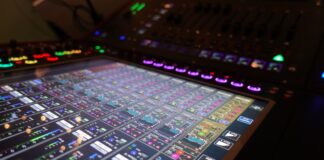Virtual reality goggles, also known as VR goggles or VR headsets, are immersive display devices that enable users to experience virtual environments in a highly immersive manner. These devices typically consist of a head-mounted display (HMD) with built-in screens, lenses, and motion sensors, allowing users to view and interact with virtual content in three dimensions. Virtual reality goggles have gained popularity in recent years due to advancements in display technology, graphics rendering, and motion tracking, offering users an unparalleled level of immersion and interactivity in virtual worlds.
Virtual reality goggles utilize a combination of hardware and software to create immersive virtual experiences for users. The HMDs feature high-resolution displays that provide crisp and detailed visuals, while the lenses help to simulate depth perception and enhance the sense of immersion. Motion sensors, such as accelerometers and gyroscopes, track the user’s head movements in real-time, allowing the virtual environment to respond accordingly and maintain a consistent sense of presence. Additionally, VR goggles may incorporate audio systems, haptic feedback devices, and other peripherals to further enhance the immersive experience.
The primary function of virtual reality goggles is to transport users into virtual environments, where they can explore, interact with objects, and engage in various activities as if they were physically present. Whether it’s traversing a digital landscape, solving puzzles, playing immersive games, or attending virtual meetings, VR goggles offer users a wide range of experiences limited only by imagination and technological constraints. By providing a sense of presence and immersion, virtual reality goggles enable users to suspend disbelief and fully engage with virtual content in a way that traditional media cannot replicate.
Virtual reality goggles are available in various form factors and configurations to suit different user preferences and use cases. Some VR goggles are designed to be tethered to a powerful gaming PC or console, offering high-fidelity graphics and advanced features for gaming and entertainment. Others are standalone devices with built-in computing power, allowing users to experience VR without the need for external hardware. Additionally, there are mobile VR goggles that utilize smartphones as the display and processing unit, providing a portable and accessible VR experience.
The adoption of virtual reality goggles has expanded beyond gaming and entertainment to include a wide range of applications in fields such as healthcare, education, architecture, and training. In healthcare, VR goggles are used for medical training, therapy, and pain management, allowing healthcare professionals to simulate medical procedures and environments in a safe and controlled manner. In education, VR goggles enable students to explore immersive learning environments, conduct virtual experiments, and engage with educational content in new and interactive ways.
Architects and designers use VR goggles to visualize architectural designs and urban planning projects in three dimensions, enabling them to better understand spatial relationships and make informed design decisions. In training and simulation, VR goggles are used to replicate real-world scenarios and provide hands-on experience in a variety of industries, from aviation and automotive manufacturing to military and first responder training. By immersing users in realistic simulations, VR goggles help to improve learning outcomes, increase engagement, and reduce training costs.
Despite the many benefits of virtual reality goggles, there are also challenges and limitations to consider. One of the main challenges is the risk of motion sickness or discomfort, which can occur when the user’s virtual movements do not match their physical movements, causing a disconnect between the visual and vestibular systems. To address this issue, VR developers employ techniques such as smooth locomotion, comfort modes, and reducing latency to minimize motion sickness and ensure a comfortable experience for users.
Another challenge is the potential for social isolation and disconnection from the real world that can occur when using VR goggles for extended periods. To mitigate this risk, developers are exploring ways to integrate social features and multiplayer experiences into VR platforms, allowing users to connect and interact with others in virtual spaces. Additionally, advancements in augmented reality (AR) technology are blurring the lines between the virtual and physical worlds, offering users a mixed reality experience that combines virtual content with real-world environments.
Virtual reality goggles have undergone significant advancements in recent years, driven by improvements in display technology, graphics rendering, and motion tracking. These advancements have led to the development of increasingly immersive and realistic VR experiences, with higher resolution displays, wider field of view, and more precise motion tracking. As a result, virtual reality goggles have become more accessible to consumers and businesses alike, with a growing number of VR headsets entering the market at various price points and form factors.
In addition to advancements in hardware, virtual reality goggles also benefit from a rich ecosystem of software and content, including games, apps, and experiences designed specifically for VR. Developers have embraced VR as a platform for creative expression, pushing the boundaries of storytelling, gameplay, and interactivity in ways that were previously impossible. From immersive narrative experiences to adrenaline-pumping action games, VR goggles offer a diverse range of content that appeals to a wide audience of users.
Virtual reality goggles are also playing an increasingly important role in enterprise applications, with businesses leveraging VR technology for training, simulation, and collaboration. In industries such as manufacturing, construction, and healthcare, VR goggles enable employees to practice skills, conduct virtual inspections, and collaborate with colleagues in immersive virtual environments. By providing hands-on training and realistic simulations, VR goggles help to improve learning outcomes, increase productivity, and reduce the risk of accidents and errors in high-stakes environments.
The future of virtual reality goggles holds even greater promise, with ongoing research and development efforts focused on improving immersion, comfort, and usability. Key areas of innovation include advancements in display technology, such as higher resolution screens and foveated rendering, which reduce the strain on the user’s eyes and improve visual fidelity. Additionally, innovations in tracking technology, such as inside-out tracking and hand tracking, offer more natural and intuitive interactions with virtual environments, further enhancing the sense of presence and immersion.
Another area of focus is the development of lightweight and comfortable designs that make virtual reality goggles more wearable for extended periods. Companies are exploring materials and ergonomics to create headsets that are lighter, more breathable, and less cumbersome to wear, making them suitable for a wider range of users and use cases. Additionally, advancements in wireless technology and battery life are making VR goggles more portable and convenient, allowing users to enjoy immersive experiences without being tethered to a PC or console.
As virtual reality technology continues to evolve, the potential applications of VR goggles are expected to expand beyond gaming and entertainment to include areas such as telepresence, virtual tourism, and remote work. With the ability to transport users to any location in the world and enable them to interact with others in real-time, VR goggles have the potential to revolutionize how we communicate, collaborate, and experience the world around us. Whether it’s attending a concert in virtual reality, exploring a museum from the comfort of home, or collaborating with colleagues in a virtual office, the possibilities are endless with virtual reality goggles.
In conclusion, virtual reality goggles represent a groundbreaking technology that offers users an immersive and interactive way to experience virtual environments. By combining high-resolution displays, motion tracking sensors, and audio feedback systems, VR goggles transport users into digital worlds where they can explore, interact, and engage with virtual content in unprecedented ways. While there are challenges and limitations to overcome, the potential applications of virtual reality goggles are vast, ranging from gaming and entertainment to healthcare, education, and beyond. As VR technology continues to evolve, we can expect to see even more innovative and transformative applications that push the boundaries of what is possible in virtual reality.














